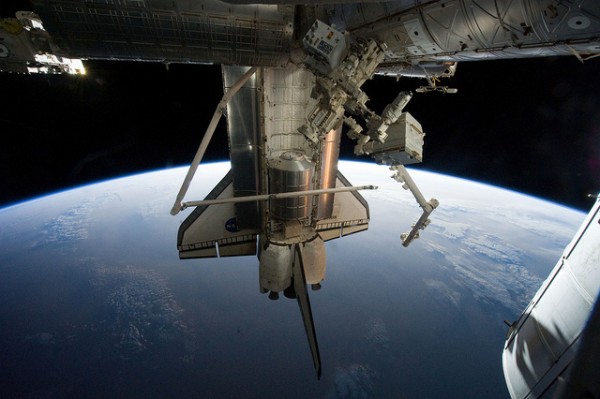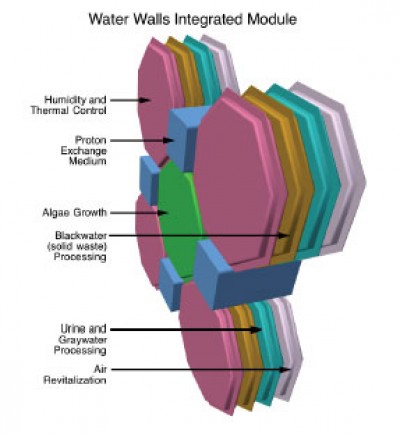The human race hails its exploration of space as one of our crowning achievements, and that’s probably appropriate, since we really have no place there. The human body is quite delicate when you think about it. We can only survive in a very specific set of environmental conditions–oxygen to breathe, clean water and certain types of food, and protection from waste contaminants that could make us sick.
To travel into space, even just for a routine mission, spacecraft must be fitted with massive human life-support systems. These systems are all mechanically driven, making them heavy, complex, and prone to breakdowns. Back up systems only make these problems worse, so NASA recently proposed a drastically different approach: fill the walls of the ship with water, and se the principle of forward osmosis to perform tasks such as water filtration, air filtration, and even food growth.

The “Water Wall” system is based on principles of filtration and oxygen production we see in nature every day. Nature uses no compressors, evaporators, lithium hydroxide canisters, oxygen candles, or urine processors. Instead, we rely on the forests, grasslands, marshes and oceans to clean our water, absorb carbon dioxide, produce oxygen, and produce food we can eat. Water walls takes an analogous approach to providing a life support system that is biologically and chemically passive, using mechanical systems only for plumbing to pump fluids such as gray water from the source to the point of processing.
According to current design proposals, polyethylene bags or tanks would be inserted into the hull of the spacecraft. These containers would be fitted with one or more forward osmosis membranes to provide the chemical processing of waste. There would be separate cells or modules for each life-support function, from air processing for CO2 removal and O2 revitalization to black and grey water processing.

Prior to lift-off, each cell would be primed with water and starter ion solutions. As certain cells became saturated, they could easily be replaced by crew members. As one cell for each function is used up, it is turned off; the next one is turned on by opening valves to admit the appropriate fluids. According to Gizmag, NASA has already experimented with some aspects of the Water Walls system aboard the International Space Station, using a device known as the Forward Osmosis Bag to convert astronaut’s urine into a sports drink.